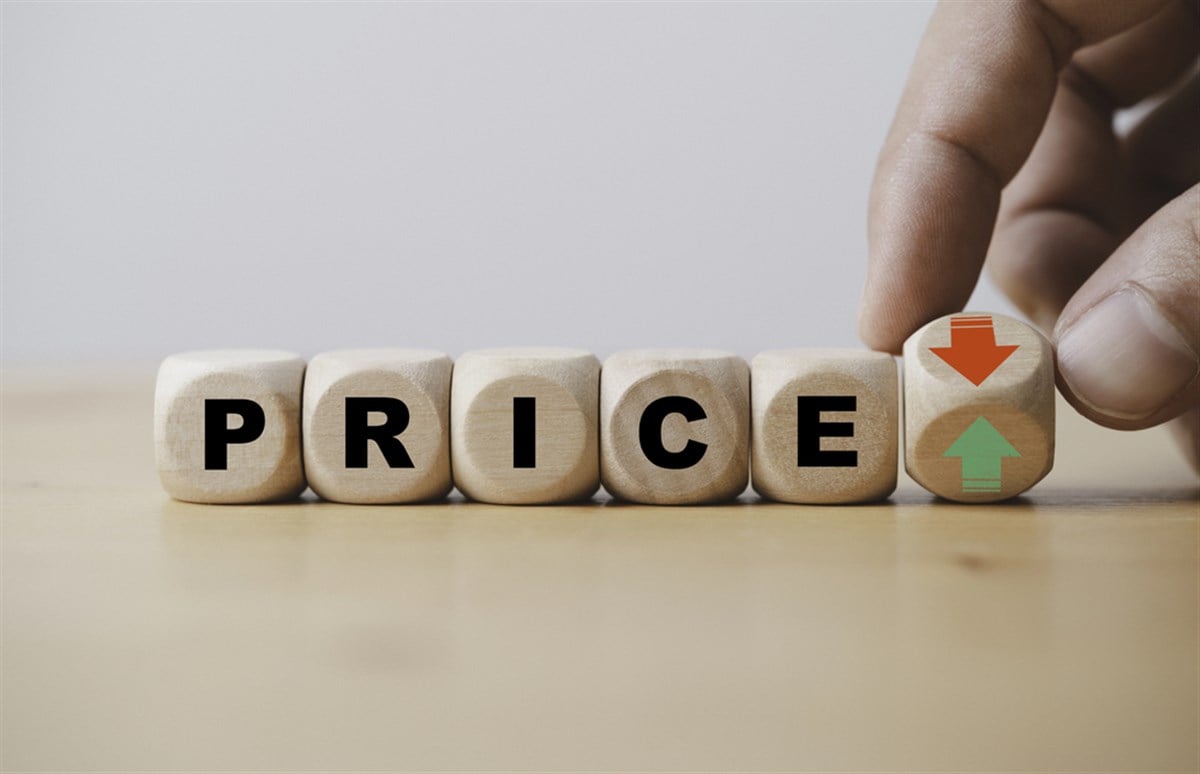| Written by Nathan Reiff 
For biotech firms, a bit of positive news—a key result from clinical trials or new drug discovery, say—can be the difference between a major rally based on a path toward sustained profitability and a slump that can lead to the firm's eventual demise. This high-risk industry is home to some of the most influential medicine makers in the world, but it is also littered with relative unknowns that may or may not ever see a significant breakthrough. Three biotech companies may stand out to investors for notable share price catalysts, either recently achieved or likely on the horizon. According to analysts, each of these companies already has positive returns year-to-date (YTD)—though to different degrees—and ample room for additional upside. Medical Device Name Rebounds Amid FDA News as Analysts Stay Bullish Boston Scientific Corp. (NYSE: BSX) makes medical devices for diagnosing and treating gastrointestinal and pulmonary conditions, among others. The company's massively popular heart devices were recently the subject of safety alerts from the FDA, prompting a slight dip in share price, although BSX stock has since reclaimed most of that decline. This may be because the company has suggested that the danger for its Watchman device, used to reduce the risk of stroke, isn't associated with the design or manufacture of the system itself, but rather with other factors like the level of anesthesia used during implantation. As the company navigates this challenge, it also has positive news to buoy it. Namely, the FDA recently approved the expanded use of its FARAPULSE pulsed field ablation system to treat certain atrial fibrillation, a condition impacting nearly 60 million people. In terms of financials, Boston Scientific is strong—its organic sales rose by 17% year-over-year (YOY) for the latest quarter, with 28% for Watchman specifically, and the company beat analyst predictions for both top and bottom lines. With 24 out of 26 analysts viewing BSX as a Buy, and upside potential of more than 10%, investors may find this stock compelling, despite being expensive. Dominant Dermatological Product Sees New Approvals, Alongside Pipeline Development Arcutis Biotherapeutics Inc. (NASDAQ: ARQT) is a biopharma firm focused on potential drug treatments for dermatological diseases. One of its primary products is ZORYVE, a topical treatment for plaque psoriasis and types of eczema. The success of this treatment helped to drive 164% YOY growth to product sales for the latest quarter and should aid the company in achieving free cash flow breakeven by next year. Though Arcutis faces intense competition, ZORYVE's dominance—it represents close to half of all non-steroidal topical psoriasis prescriptions—alongside important new pipeline developments, provides stability. The FDA recently approved the company's ZORYVE foam for scalp and body plaque psoriasis, providing access to a new group of customers, and the company expects additional decisions from regulators later in the year. Arcutis also has a strong lineup of drugs in development, including a candidate for treating atopic dermatitis, and new studies on candidates for treating vitiligo and hidradenitis suppurativa. Arcutis does not have as much analyst attention as Boston Scientific, but six out of seven analysts rate ARQT a Buy Notably, the company may have 24% in upside potential, despite already climbing by nearly 10% YTD. Major Demodex Treatment Success and a Promising Pipeline Another biopharma company, Tarsus Pharmaceuticals Inc. (NASDAQ: TARS) focuses on eye care. Though the firm posted wider-than-anticipated losses per share of 48 cents in its second quarter, it also reported a strong net sales beat of almost $103 million, thanks to sales of XDEMVY, a treatment for Demodex blepharitis, and its successful direct-to-consumer campaign. Investors may be interested in following the company's pending Phase II study of its TP-04, a candidate for treating ocular rosacea, which appears promising. This and other drugs in Tarsus' pipeline have led six out of seven analysts to rate the company a Buy. Shares of TARS are up about 4% YTD, but with more than 16% in upside potential, the firm may have plenty of room for a continued rally.  Read This Story Online Read This Story Online |  Michael Robinson has been at the forefront of the technology market for over 40 years.
Spotting some profitable trends in tech … well ahead of Wall Street.
Like when he called Nvidia at a mere 80 cents a share.
Or Bitcoin when it was trading for just $300.
Throughout his illustrious career …
Michael has given his followers almost 150 different chances to register triple-digit gains. Now he's identified his next potential winner. Click here to find out more. |
| Written by Gabriel Osorio-Mazilli 
All stocks in the market go through their own ebb and flow cycles; there are no exceptions. No investor can escape this behavior, but they can look for opportunities at either end of that pendulum, where most other participants may not be willing to step in, as emotions (like the pendulum swings) are probably at extremes. Consequently, this is also where the best investments are found. Today, as the S&P 500 approaches another all-time high record, a few stocks have been left behind, possibly due to overly bearish expectations or simply a lack of popularity and hype. Still, the fact is that these are the ones investors should have at the top of their watchlists for when the pendulum inevitably begins swinging in the other direction. To fill this new upside watchlist, investors can consider names like American Airlines Group Inc. (NASDAQ: AAL) for the transportation sector, First Solar Inc. (NASDAQ: FSLR) for a mix of energy, and then CarGurus Inc. (NASDAQ: CARG) for exposure into some of the latest shifts in the consumer discretionary sector, especially now that tariffs are throwing the usual balance off. A Fundamental Push for American Airlines Stock Now that the dollar index is starting to rebound, few investors will make the connection as to how this can affect a stock like American Airlines. Fundamentally, the United States consumer sees more purchasing power out of each dollar. In that case, discretionary spending (like travel) will also likely see a boost. This is already taking place, whether Wall Street wants to call it out or not, as American Airlines reported a net earnings per share (EPS) figure of 95 cents in its latest quarterly financial release, a gap of 20% above the 79 cents expected from the rest of the market. Investors can take away from this that expectations had become so low due to the stock’s lackluster price action—it is now trading at only 72% of its 52-week high—and potentially overdone forecasts for weakness across the industry. However, the recent strengthening in earnings power indicates that the small dollar index rally over the past quarter was enough to send Wall Street into shock, a trend that is likely to continue as short sellers begin to capitulate, marked by a 5.7% decrease in their net positions over the past month. One Ratio Is Enough for First Solar Stock Another earnings beat came from First Solar, as the company reported $3.18 in EPS compared to the $2.18 expected from the rest of the market. Low oil prices keep renewable energy on the back burner, and since traditional fuel is more affordable today, some investors and analysts have also forgotten about First Solar. However, recent trade tariffs against China have created a power vacuum in the solar space, considering that China exports most of the world’s polysilicon (necessary to make solar panels), making domestic solar companies key players in this supply shift. Which might also be why Wall Street now forecasts $5.69 in EPS to be reported by the fourth quarter of 2025, a jump that is not priced in yet. According to the price-to-earnings-growth (PEG) ratio, First Solar stock has not yet priced in the forecasted EPS growth that these analysts are calling for. Any ratio below 1.0x indicates upside potential, as First Solar’s 0.2x PEG suggests higher prices are likely. That explains why Guggenheim analyst Joseph Osha decided to stand out from consensus through his Buy rating, valuing First Solar at $287 per share (or 42% above today’s prices). Compared to the Moderate Buy and $225 valuation consensus, this analyst is now looking at the realistic setup. CarGurus Is The Premium Name Since tariffs have scared consumers into buying new cars at a markup, owned vehicle dealers like CarGurus are stepping up to solve that problem. Therefore, markets are willing to place a premium valuation on the stock compared to other peers in the auto sector. With a price-to-book (P/B) ratio of 7.8x today, CarGurus stands above the 2.9x average in the auto sector. This means the market is willing to overpay for the company’s balance sheet items (likely unsold vehicles), knowing what the future of the industry holds and how CarGurus is positioned in that scenario. Looking at market sentiment besides valuations, investors can note that 11.8% of CarGurus’ short interest has collapsed over the past month, meaning not even bears have a reason to stay in their positions now that the risk-to-reward ratio is clearly set up in favor of buyers here.  Read This Story Online Read This Story Online |  What If Washington Declared That: YOUR Money ISN'T Actually Yours?
Sounds insane, but that's exactly what the Department of Justice just admitted in court—claiming cash isn't legally your property.
What does that mean? It means Washington thinks they can seize, freeze, or drain your accounts—whenever they want. Get your free guide now by clicking here >> |
| Written by Gabriel Osorio-Mazilli 
Share buybacks are one of the most direct ways a company’s management can express its optimism for the underlying business and its future potential. They are also the most tax-efficient way of doing so, since this money isn’t paid out to investors through dividends, creating a double-taxation event. It retains the capital within the company to fuel further growth areas and compound its valuation. More than that, it reduces the size of the pie in terms of available shares in the market. It directly increases each shareholder’s ownership without needing to purchase additional shares. This also has a bullish impact on future earnings per share (EPS) figures, automatically boosting potential valuations as multiples expand on themselves at that point. This is why investors should consider a consumer staples stock like Sprouts Farmers Market Inc. (NASDAQ: SFM). Insiders recently approved a new stock buyback program, which has a lot more implications for the future of the company and its stock. Still, investors can begin by understanding where the company's fundamentals are today and why they are paramount to future growth. Why Sprouts Farmers Market Is Worth a Buyback Operating under the certainty that its business will be less exposed to the economic cycle, Sprouts Farmers Market has a direct benefit in being able to handle its financials a lot better. More than that, the brand has become popular among younger buyers and upcoming health trends, placing it apart from its close peers in the industry. Knowing this, investors shouldn’t be surprised to see the company report gross profit margins of 39% over the past 12 months, despite a few quarters where trade tariffs and inflation could have done some damage to its business model. This margin represents not only resilience but also a consumer's willingness to keep coming back, adding to market share. What this all trickles down into is a net 16% return on invested capital (ROIC) rate for the business, also known as one of the most important ingredients in finding a stock that can compound on its value into the future. Annual stock price performance tends to match the long-term ROIC average rate, so investors can now start connecting the dots. Through a newly announced $1 billion stock buyback program, Sprouts Farmers Market will essentially be placing this capital in a place where it can tap into this high ROIC rate and create additional cash flow for its balance sheet, allowing it to cushion further economic volatility and reinvest into the components that make the brand successful. Investors Are Bullish on Sprouts Farmers Market Stock Another signal from stock buybacks is that company insiders believe the quoted price is below their intrinsic value. Who knows where that value is better than those who run the company? That said, it seems insiders aren’t the only ones turning bullish on Sprouts Farmers Market stock. As of mid-August 2025, institutional buyers from Bank of America justified opening a new position in the stock. With a $425.6 million stake today, the bank owns 2.6% of the entire company, a vote of confidence and trust that investors can add to their potential buying plans for this name. Other Wall Street participants are also willing to express their optimism for this stock and its future, as analysts see it as a Moderate Buy valued at $173.7 per share (implying 19.4% upside). However, others have taken a much more aggressive view, considering the net effect these stock buybacks could have on the stock in the coming quarters. For example, Michael Morris from Evercore, sees Sprouts Farmers Market as an Outperform, attached to a $190 price target, calling for a much higher 30.5% upside potential compared to today’s prices. While bold, this view also aligns with that of Jefferies Financial Group, suggesting it is grounded in a realistic future for the company. In terms of sentiment, the bullish lens doesn’t stop at analyst and institutional readings, but also on the other side of the equation through bearish traders. Over the past quarter, the company’s short interest has declined from $1.3 billion to $936.5 million instead. While not the most aggressive decline, it implies a potential bearish capitulation is underway for Sprouts Farmers Market stock, which could accelerate if these $190 price targets are met in the coming quarters. Investors are now armed with all the important aspects fueling this buyback program and how that could create a new rally for the stock.  Read This Story Online Read This Story Online |  |
|
0 Response to "🦉 The Night Owl Newsletter for August 25th"
Post a Comment